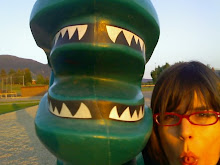
The Prince of Tides by Pat Conroy has an absorbing plot and beautiful sketches of the American South. The main character, Tom Wingo, finds out his schizophrenic poet sister has attempted suicide and goes to New York to try to help her. Helping her mostly consists of talking about how his parents were abusive and sleeping with her therapist. The book has mass appeal and has been a bestseller (easy to read, long enough words to make people feel smart without being obscure enough to go to the dictionary, pretty cover). Critics like it (white people with dysfunctional families are always a hit).
The first problem is that though there are many surprises, there are also many utterly predictable plot points. From the moment his sister's therapist, Dr. Lowenstien, makes her entrance, it is obvious Tom will wind up sleeping with her. This is the kind of book where if a main female character is described as "attractive," she'll end up naked with the protagonist. It's a wonder authors ever get laid.
That, however, is small beans compared to Conroy's apparent inability to grasp reality. Savannah (Crazy Sister) is a famous poet living in New York City. Dr. Lowenstien takes her as a patient in part because she hopes to be the therapist-who-helped-the-tortured-poet and thus become famous herself. Because that's how all the big celebrities made their start.
Another incident in the The Prince of Tides that made me stop and scratch my head was Savannah's children's book. This book is about three children who befriend animals, almost get raped by three bad guys who come to their house, but are able to summon help from their animal friends who kill the offenders. Frankly, I think a parent would have to be seriously sick to ever consider reading this to his or her children.
The final reason this book rubbed me the wrong way was Tom Wingo's obsessive self-pity that I suspect Conroy shares. Tom constantly goes on about how white Southern males are discriminated against. (Granted, this is true. Southern people are often assumed to be ugly, provincial, and stupid by other Americans, and it's a prejudice that most of us hold without thinking.) Dr. Lowenstien's first question to Tom is if he has ever called anyone a nigger. It's never clear how this relates to Tom's coming to help Savannah, but as a liberal Jewish woman obviously Lowenstien must hate Tom for being white and Southern and straight and male. Uh-huh. Then later in the book Tom meets one of Savannah's friends, a gay man. No, this man is not portrayed as a three-dimensional human being, rather he is flamboyant and polyamorous, flirts with Tom constantly, and throws around the word "honey" a lot. Eventually Conroy condescendingly has Tom befriend Gay Man, showing that he is not a homophobic southern man while also happily writing off gays as frivolous and lacking any traits beyond their sexual orientation. Tom also has many run-ins with lesbian feminists who are friends of his sister. Unsurprisingly, they all hate Tom because of his being a man and all. There are a lot of words about how this is unfair and how Tom feels bad. Conroy doesn't seem to understand that maybe, just maybe, one faces more discrimination as a queer woman than as a young straight white male. Besides, lesbians love guys, it's the women who sleep with them who become man-haters. Ask any lezbro.
In other words, I don't think I'll be buying The Pat Conroy Cookbook anytime soon.





